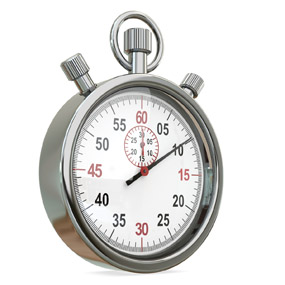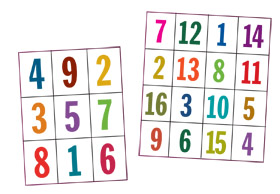Quick Responses Mean Positive Results
 Each year, InsideSales.com regularly tests companies on their responses to Web-based inquiries (sometimes referred to as “leads”). One obvious result is immediacy and persistency of lead follow-up means more positive results. In other words, the faster you respond, the better—the odds are 100 times greater when a contact attempt occurs within five minutes of the inquiry, compared with 30 minutes after the lead is submitted. For its 2014 report, more than 14,000 companies were surveyed. The most popular means of a first response was email (70%), while 30% chose to call. Of those who responded with a call, about 5% failed to leave a voicemail. Even more (14%) chose not to leave a voicemail on the second attempt—probably not the best way to go. The survey also found smaller companies had the quickest response times.
Each year, InsideSales.com regularly tests companies on their responses to Web-based inquiries (sometimes referred to as “leads”). One obvious result is immediacy and persistency of lead follow-up means more positive results. In other words, the faster you respond, the better—the odds are 100 times greater when a contact attempt occurs within five minutes of the inquiry, compared with 30 minutes after the lead is submitted. For its 2014 report, more than 14,000 companies were surveyed. The most popular means of a first response was email (70%), while 30% chose to call. Of those who responded with a call, about 5% failed to leave a voicemail. Even more (14%) chose not to leave a voicemail on the second attempt—probably not the best way to go. The survey also found smaller companies had the quickest response times.Strange But True
Q. “Magic squares” are square arrays of numbers where any row, column or diagonal sums up to the same number. So what’s the smallest magic square you can think of?
A. Magic squares go back in history to at least 10th century Persia and India, often involving the numbers 1, 2, 3, 4… up to the number of cells in the array, says Ian Stewart in Professor Stewart’s Incredible Numbers. “These have no great significance in mathematics, but they’re fun.” A classic small square uses the digits 1 through 9, as follows:

As you can see, its magic “constant” is 15: Since all nine digits are included, their total is 1 + 2 + 3… + 9 = 45, which divided by 3 equals 15. “The square shows other patterns as well: The even numbers occupy the four corners. Diametrically opposite numbers always add to 10.”
Now for an order-four magic square from the tenth century:
Here, 34 is the magic constant (there are actually 880 fundamentally different order-four magic squares).
Source: Bill Sones and Rich Sones, Ph.D.
On the Pulse
Morgan Stanley recently polled high net worth investors (people with $100,000 in investable income or more) in the San Francisco metro market to gauge their investment interests by industry and topic. The Morgan Stanley Investor Pulse Poll, which ran last quarter 2014, surveyed 300 investors ages 25 to 75. Here’s a sampling of results:
84% are very likely or somewhat likely to invest in the technology industry in 2015.
60% will likely invest in real estate.
67% say they’ll invest in biotech.
30% anticipate investing in the wine industry.
The topics most important to them are:
Water conservation (96%)
Healthy living (89%)
Clean energy (85%)
Resource and waste management (81%)
Climate change (71%)
Food including organic, non-GMO or humanely raised (64%)



